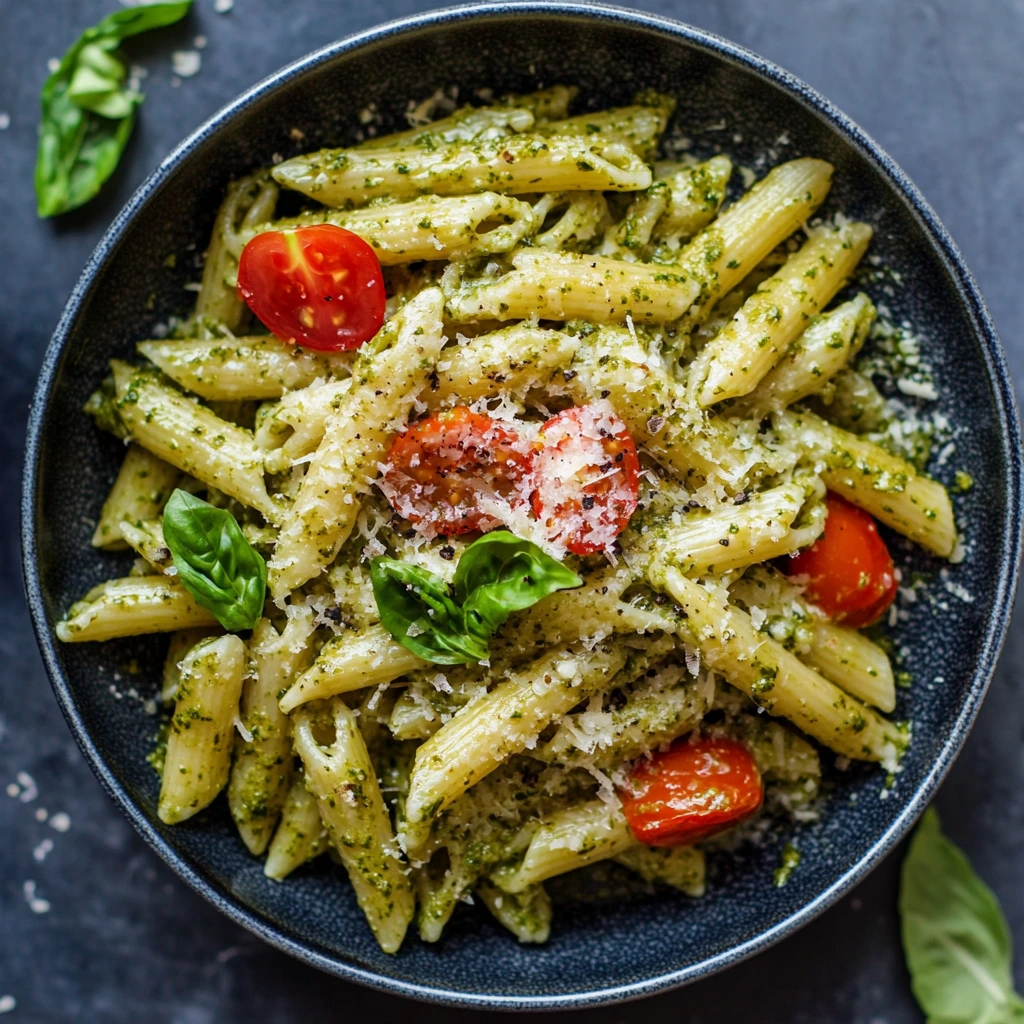There’s something magical about a good pesto pasta recipe—the way the fresh basil, garlic, cheese, and nuts combine into a vibrant green sauce that clings perfectly to pasta. It’s fragrant, flavorful, and takes just minutes to prepare. Whether you’re cooking for a busy weeknight dinner or impressing guests, this classic Italian favorite is a must-try.
In this post, you’ll learn how to make authentic pesto from scratch, choose the right pasta, and create the perfect balance of ingredients to bring out the best in your dish. Ready to cook like a true Italian? Let’s get started.
🧄 What Is Pesto?
Pesto is a traditional Italian sauce originating from Genoa in the Liguria region. The classic version, known as Pesto alla Genovese, is made with:
- Fresh basil leaves
- Garlic
- Pine nuts
- Parmesan cheese (or Pecorino)
- Olive oil
The word “pesto” comes from the Italian verb pestare, meaning “to crush” or “to pound,” which reflects how it was traditionally made with a mortar and pestle.
Today, pesto is enjoyed all over the world and has many variations, but nothing beats the bright, aromatic flavor of the original.
🍝 Ingredients You’ll Need
Here’s what you’ll need to make this simple yet delicious pesto pasta recipe:
For the Pesto Sauce:
- 2 cups fresh basil leaves (packed)
- 2 cloves garlic
- ¼ cup pine nuts (or walnuts for a budget-friendly option)
- ½ cup grated Parmesan cheese
- ½ cup extra-virgin olive oil
- Salt to taste
- Optional: a squeeze of lemon juice for brightness
For the Pasta:
- 12 oz spaghetti, linguine, penne, or fusilli
- Salt for pasta water
- Optional toppings: cherry tomatoes, grilled chicken, roasted veggies, or extra cheese
👩🍳 How to Make Pesto Pasta (Step-by-Step)
Step 1: Cook the Pasta
Bring a large pot of salted water to a boil. Add your pasta and cook according to package instructions until al dente. Reserve ½ cup of the pasta water before draining.
Why salt the water? It’s the only chance to season the pasta from the inside out!
Step 2: Make the Pesto Sauce
While the pasta cooks, make the pesto.
Food processor method (quick & easy):
- Add basil, garlic, and pine nuts to a food processor. Pulse until roughly chopped.
- Add cheese and pulse again.
- Slowly drizzle in the olive oil while blending until smooth.
- Season with salt and a squeeze of lemon juice if desired.
Traditional mortar & pestle method:
If you’re feeling traditional, crush the garlic and salt together, add basil gradually, then nuts, cheese, and finally the oil. This method gives a more textured and aromatic result.
Step 3: Toss Pasta with Pesto
In a large bowl or the same pot (off the heat), combine the drained pasta and pesto sauce. Add a splash of the reserved pasta water to loosen the sauce and help it cling to the noodles.
Tip: Start with a few tablespoons of pesto and add more as needed. You can store extra in the fridge.
Step 4: Serve and Garnish
Serve immediately, garnished with extra Parmesan, cracked black pepper, and optional toppings like:
- Sliced cherry tomatoes
- Roasted pine nuts
- Shredded rotisserie chicken
- Sauteed shrimp
- Steamed broccoli
💡 Variations You’ll Love
Want to customize your pesto pasta recipe? Try these twists:
1. Creamy Pesto Pasta
Add ¼ cup of heavy cream or a spoon of cream cheese for a rich and velvety version.
2. Vegan Pesto Pasta
Swap Parmesan for nutritional yeast or vegan cheese, and make sure your pasta is egg-free.
3. Pesto Pasta with Chicken
Grill or pan-sear sliced chicken breasts and mix them in for a protein-packed meal.
4. Gluten-Free Pesto Pasta
Use gluten-free pasta such as brown rice or chickpea-based options for a wholesome alternative.
🧊 How to Store Leftovers
- Refrigerate: Store in an airtight container for up to 3–4 days.
- Freeze: Pesto sauce can be frozen in ice cube trays, then stored in freezer bags for up to 3 months. Great for future quick meals!
Reheating Tip: Add a splash of water or olive oil to loosen the sauce when reheating.
🧂 Pro Tips for the Best Pesto Pasta
- Use fresh basil. Avoid wilted or bitter leaves for the best flavor.
- Toast your nuts. Lightly toasting pine nuts or walnuts enhances their flavor.
- Don’t overcook pasta. Al dente texture helps the pasta hold up against the sauce.
- Balance the flavor. Add lemon juice or extra cheese to adjust acidity and richness.
🇮🇹 Why This Dish Is So Loved in Italy
Pesto pasta is beloved in Italy because of its simplicity and celebration of fresh ingredients. It’s not overly heavy, comes together quickly, and showcases the essence of Ligurian cuisine—fresh herbs, quality cheese, and olive oil.
It’s also incredibly versatile. You can serve it hot, at room temperature, or even cold as a pasta salad. Whether enjoyed as a main course or side dish, it never fails to please.
📝 Final Thoughts
This pesto pasta recipe is proof that some of the best meals don’t require a long list of ingredients or complicated steps. With just a few pantry staples and fresh basil, you can create a vibrant, restaurant-worthy Italian dish right at home.
So next time you’re in the mood for something comforting, flavorful, and fast—skip the takeout and make this pesto pasta instead. You won’t regret it.


3 thoughts on “Pesto Pasta Recipe: How to Make This Italian Favorite at Home”